This article contains too many or overly lengthy quotations .(August 2020) |
Wang Qingsong (born 1966) is a Chinese photographer.
This article contains too many or overly lengthy quotations .(August 2020) |
Wang Qingsong (born 1966) is a Chinese photographer.
He was born in Daqing, China in 1966, and grew up in Hubei. [1] [2] He studied at the Sichuan Academy of Art. [1] He moved to Beijing in 1993. [2] On his background, he said, "I think there are many regional distinctions that I have incorporated into my art. For example, being born in Heilongjiang Province, I remember a lot of Soviet tanks going around when I was three. At that time, China had a confrontation with the Soviet Union. When we moved to Hubei Province, many people were assigned there to work on an oil field that used to be a swamp. In Sichuan, I was in one of the most populous cities in the world and the most important memories were of all the itinerant peasant workers from Chongqing. Then, in 1993, the huge urbanization strive in Beijing also impacted my art. All of these experiences have given me a lot of inspiration." [2]
He began his career as an oil painter, then moved on to photography. [2]
He considers himself both a journalist and an artist, saying, "I think it is very meaningless if an artist only creates art for art's sake. For me, the dramatic changes in China have transformed China into a huge playground or construction site. Whenever I go into the city I feel suffocated by the pollution, social contradictions, and so forth. All of these factors contribute to the fact that artists cannot just make art for art's sake. I think it would be absurd for an artist to ignore what's going on in society." [2] His art focuses on political topics such as the government of China.
In 2009, the Hammer Museum exhibited his piece Skyscraper:
In Skyscraper, Qingsong employed 30 scaffolding workers from the countryside near Beijing during a month long production, to build a 35meter high ‘skyscraper’ out of gold-painted iron scaffolding. Using stop-action 35mm film he captures the entire process, but without showing the workers. China has been growing at breakneck speed but what is not always noticed, like Wang’s process behind his photos, is the immediate effect and sacrifices of millions of displaced and anonymous people. The end of the film shows fireworks exploding from the top of the skyscraper in a jubilant but dark celebration as we listen to three women sing a Chinese version of “Silent Night, Holy Night.” [3]
He works mostly in China, but in 2018, he created the piece The Bloodstained Shirt while visiting Michigan. The University of Michigan Museum of Art, where the piece was shown, wrote of it,
In The Bloodstained Shirt (2018), Chinese artist Wang Qingsong restages in Highland Park, Michigan, an iconic 1959 drawing by Wang Shikuo of peasants rising up against a cruel landlord and triumphantly reclaiming their right to the land. Wang’s projects are usually located in China, but while visiting southeast Michigan he was struck by the similarities between the effects of inequitable real estate development on local communities in Detroit, Highland Park, and his native Beijing. His large-scale photograph, set in an abandoned factory building in Highland Park and featuring more than seventy volunteers, collapses two moments in history to present a vivid reminder of the human consequences of the ruthless pursuit of profit and the power of collective action. The exhibition includes works created in collaboration with area residents that give voice to their concerns and their hopes for transformation and renewal. [4]
He created his piece On the Field of Hope during the 2020 COVID-19 pandemic. In the summer of 2020, it was on display at the Tang Contemporary Art gallery in Beijing. [5] The gallery wrote that his work "showcases the tension between changing societal realities and human desires, and imaginatively presents the ongoing drama that hovers between fields of the past and hopes for the future." [5]
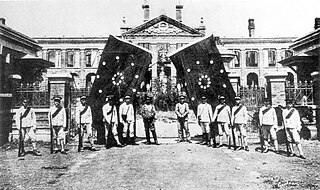
The Wuchang Uprising was an armed rebellion against the ruling Qing dynasty that took place in Wuchang, Hubei, China on 10 October 1911, beginning the Xinhai Revolution that successfully overthrew China's last imperial dynasty. It was led by elements of the New Army, influenced by revolutionary ideas from Tongmenghui. The uprising and the eventual revolution directly led to the downfall of the Qing dynasty with almost three centuries of imperial rule, and the establishment of the Republic of China (ROC), which commemorates the anniversary of the uprising's starting date of 10 October as the National Day of the Republic of China.
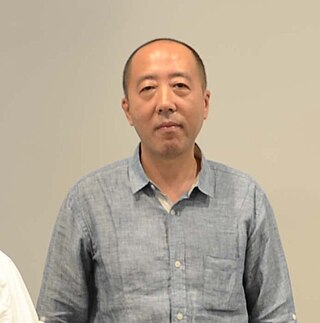
Zhang Dali is an artist based in Beijing.

Zhang Xiaogang is a contemporary Chinese symbolist and surrealist painter. Paintings in his Bloodline series are predominantly monochromatic, stylized portraits of Chinese people, usually with large, dark-pupiled eyes, posed in a stiff manner deliberately reminiscent of family portraits from the 1950s and 1960s. Recently, he also created sculptures, translating for the first time into three dimensions many characters of the sort seen in his "Bloodlines—Big Family" portrait series. These sculptures have featured in many exhibits and continue his work as one of China's leading, and most highly sought-after, contemporary artists.
Feng Zhengjie is an artist based in Beijing and Jeju Island of South Korea. Originally a high-school and college art teacher in Sichuan, he came to Beijing in 1995.
Liu Wei is a Chinese artist based in Beijing. He works in varied media – video, installation, drawing, sculpture, and painting – with no uniting stylistic tendency, though the Saatchi Gallery finds a uniting theme of "a sentiment of excess, corruption, and aggression reflective of cultural anxiety". Conceptualism, satire, and humor are the hallmarks of his works.
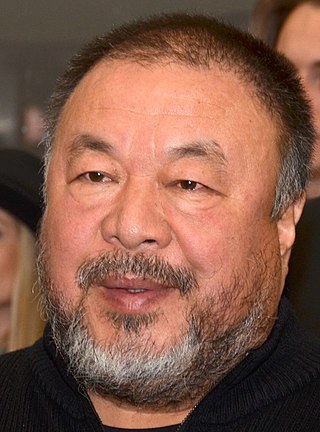
Ai Weiwei is a Chinese contemporary artist, documentarian, and activist. Ai grew up in the far northwest of China, where he lived under harsh conditions due to his father's exile. As an activist, he has been openly critical of the Chinese Government's stance on democracy and human rights. He investigated government corruption and cover-ups, in particular the Sichuan schools corruption scandal following the collapse of "tofu-dreg schools" in the 2008 Sichuan earthquake. In 2011, Ai Weiwei was arrested at Beijing Capital International Airport on 3 April, for "economic crimes". He was detained for 81 days without charge. Ai Weiwei emerged as a vital instigator in Chinese cultural development, an architect of Chinese modernism, and one of the nation's most vocal political commentators.
The Campaign to the North of Nanchuan County, Sichuan, was part of the Campaign in Southwestern China launched by the communists against the nationalists in the region to the north of Nanchuan (南川) County during the Chinese Civil War in the post World War II era, and resulted in communist victory.

Zhan Wang is a Chinese sculptor.
Shang Yang is a contemporary Chinese painter based in Beijing and is considered one of the most important painters of the life-stream movement. Known for his oriental humanist thought he believes landscapes are living things and puts their spirit into his brushwork. In 1965 he graduated from the Hubei Art Academy, where he then taught for several years. He received his masters from the Hubei Art Academy in 1981. Yang became the Associate President in 1989. Shang Yang became a Professor and the Officer-in-Charge of Fine Arts at the Research Institute of South China Normal University in 1993. Also in 1993, he became the Vice President of the Chinese Art painting Society. Shang Yang has exhibited extensively in China since the 1980s, including at Shanghai Biennale in 1996, and has shown internationally at galleries in London, Paris, Tokyo, St. Petersburg, and Helsinki. Shang Yang's work often appropriates images from traditional Chinese landscape painting, which are screened onto the canvas by a machine; he then distorts the image with graffiti or obtrusive geometrical designs. His works combine avant-garde exploration and solid artistic skill to create unique works of expressionism oil painting.
Wei Guangqing is a contemporary Chinese painter. He is known most of all for his Red Wall and Made in China Series. Wei Guangqing was one of the main members of the “85’s New Wave Art Movement”. In the 1990s he became one of the most well-known "political Pop artists". His work adopts a flat and symbolic composition, linking traditional ethics and modern culture. “Red Wall” is a symbolic work of pop art, using the traditional woodcarving-illustration prints and stories, through the process of Pop, to imply the various meanings of contemporary private and secular life. Wei Guangqing includes the contradictions of tradition and modernity by using a language related to cartoons and comic strips. His color palette consists of strong, often complementary colors. The artist creates a historical-ethical Pop with regional significance and uses the age-old tradition as a metaphor about today’s world.
Liu Kuo-sung is a Chinese artist based in Taipei, Taiwan. Liu is widely regarded as one of the earliest and most important advocates and practitioners of modernist Chinese painting. He is also a writer on contemporary Chinese art.
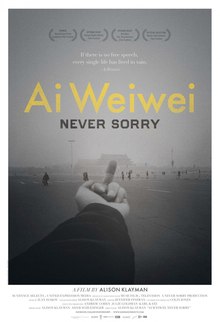
Ai Weiwei: Never Sorry is a 2012 documentary film about Chinese artist and activist Ai Weiwei, directed by American filmmaker Alison Klayman.
Zhao Yao is an artist in installations as well as performance, video and photography. He grew up in Sichuan and currently lives and works in Beijing.
Chen Ke is a Chinese artist. She currently lives and works in Beijing. Having participated in numerous international and domestic exhibitions, Chen Ke has worked in a variety of media, including painting, sculpture and fashion design. Chen Ke is recognized as the most representative artist of the New Generation of Cartoon of China.

Gu Xiong is a Canadian contemporary artist.
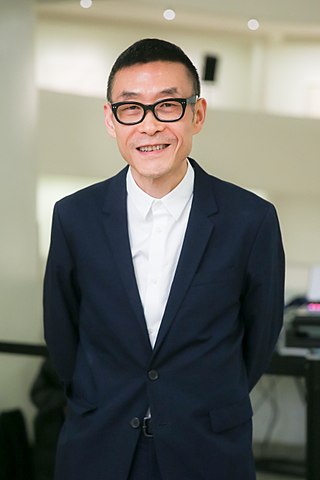
Wang Jianwei is a new media, performance, and installation artist based in Beijing, China.

Wang Huangsheng is a Chinese-born curator, educator and artist who is currently residing in Beijing. He used to serve as the director of China Central Academy of Fine Arts Museum for eight years. As an curator, he is most known for his curated events. He has been the curator of Guangdong Museum of Art and the Museum Art of Central Academy of Fine Arts for a long time.
Ding Yi is a Chinese contemporary artist currently based in Shanghai. He is a pivotal figure in the development of geometric abstraction in China, and is currently a professor at the Shanghai Institute of Visual Arts.
Ma Shitu was a Chinese politician and novelist. He was president of the Sichuan Writers Association.
Hu Zhiying is a contemporary Chinese avant-garde artist and art educator. He works within the areas of painting, installation, video art, and conceptual art. His artworks are displayed worldwide, and he has taught painting and calligraphy at the Guangzhou Academy of Fine Arts and South China Normal University.